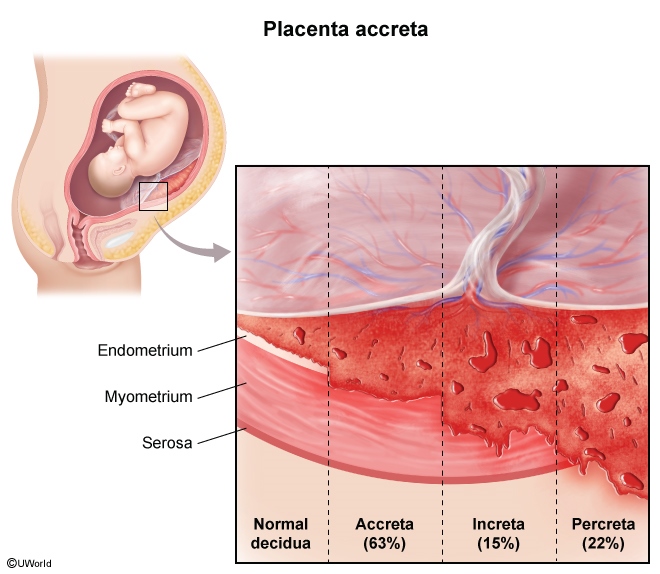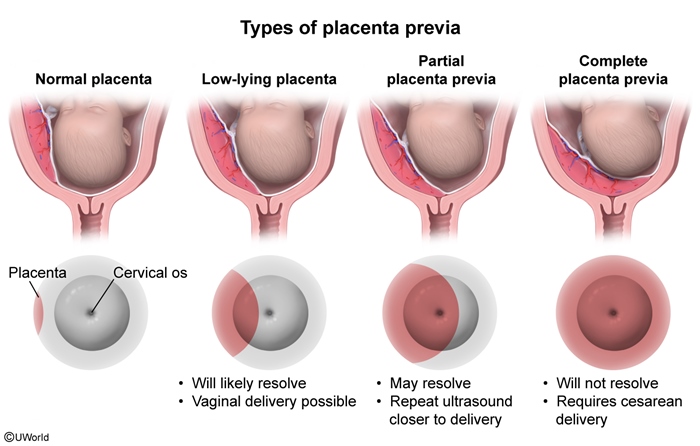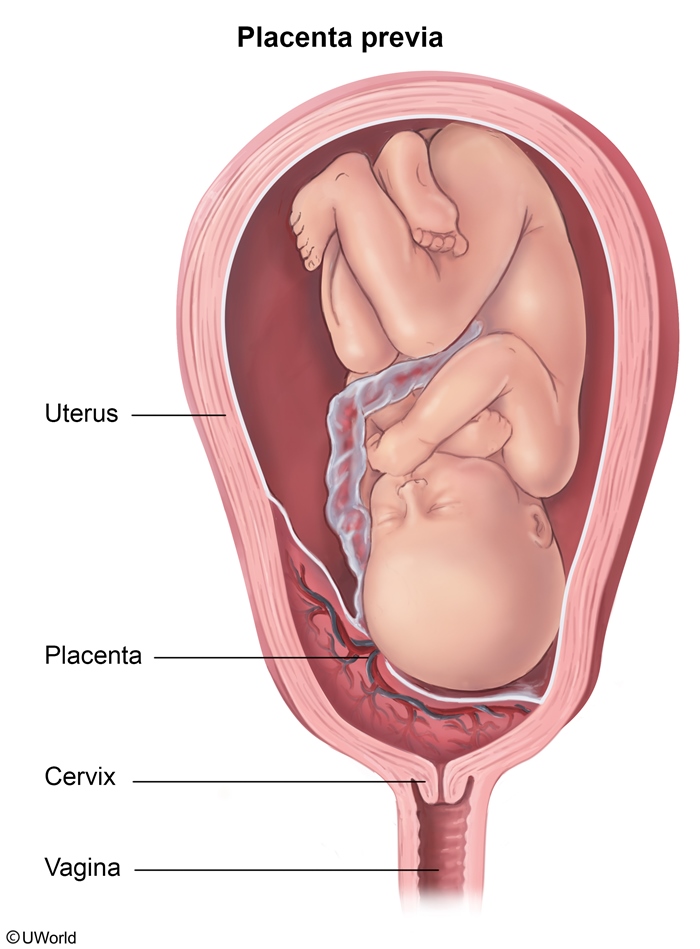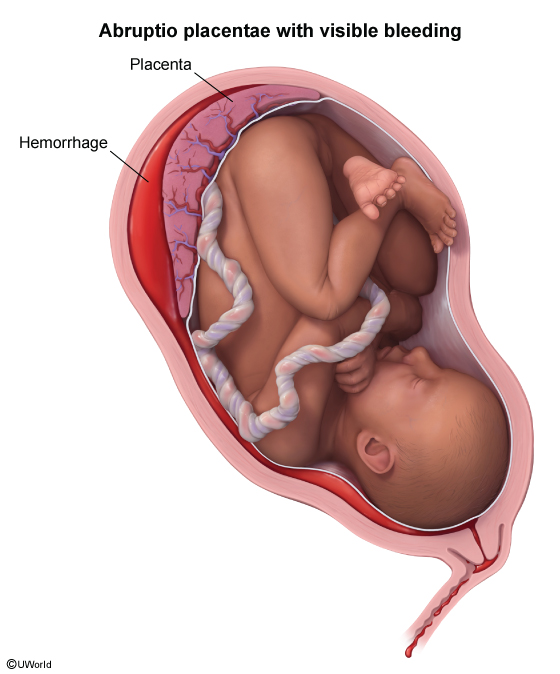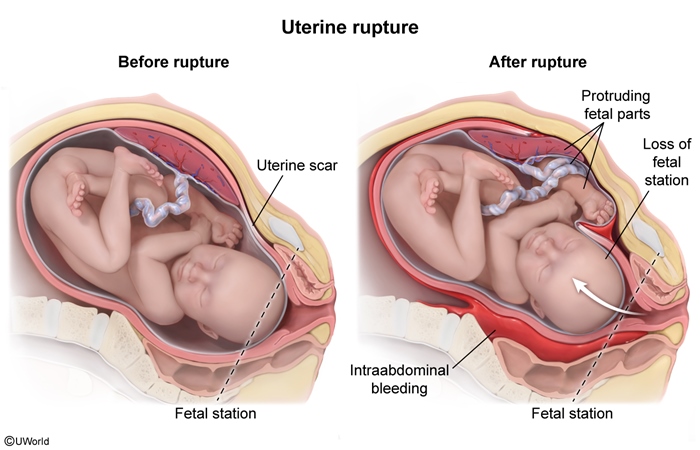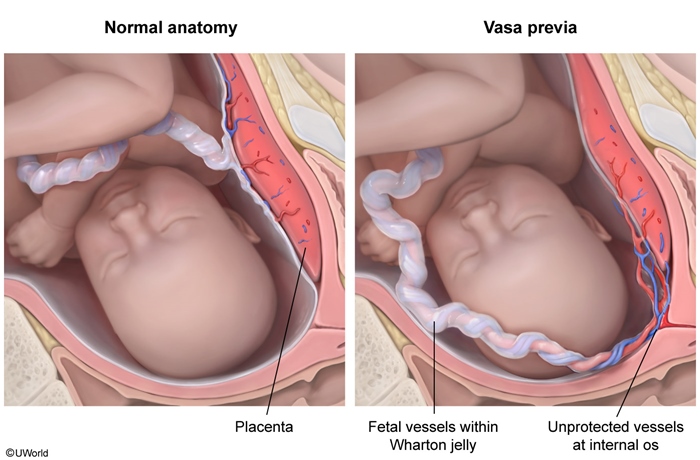Placenta Accreta Spectrum
Article Sections
Introduction
Placenta accreta spectrum describes the abnormal placental attachment to the myometrium, which creates a morbidly adherent placenta. PAS is categorized by depth of abnormal placental invasion (Figure 1):
- Placenta accreta: placental attachment to the myometrium
- Placenta increta: placental attachment/invasion into partially into the myometrium
- Placenta percreta (most severe): complete placental penetration through the myometrium to the uterine serosa, and potentially into adjacent structures (eg, bladder)
Pathogenesis
The uterus has 3 layers: the serosa (outermost layer adjacent to other pelvic structures [eg, bladder]), the myometrium (middle layer of smooth muscle), and the endometrium (inner layer lining the uterine cavity).
In early pregnancy, progesterone stimulates endometrial decidualization, transforming the endometrium into the decidua basalis. Normally, trophoblasts (which develop into the placenta) attach to this specialized endometrial layer because it promotes placental growth. As it thickens, the decidua becomes a distinct tissue plane separating the developing placenta and myometrium. After delivery, declining progesterone stimulates breakdown of the decidua; along with uterine contractions, this applies a shearing force to the weakened decidual layer. As a result, the placenta and decidua basalis spontaneously detach, and the placenta is delivered minutes after the fetus.
Continue Learning with UWorld
Get the full Placenta Accreta Spectrum article plus rich visuals, real-world cases, and in-depth insights from medical experts, all available through the UWorld Medical Library.
Figures
